When I set up a poll recently on the number-one reason why homeowners choose one countertop material over another, the top answer was “look.” Right after that was “price.”
You aren’t surprised. I wasn’t, either.
But that logic is missing a HUGE component…the one that actually comes first.

If looks are important to you, then you want to select the material that will look AS amazing in three years as it does the day it’s installed. That means factoring in performance and maintenance first.
The secret of long-term Loving Your Home®—down to your kitchen and bathroom countertop selections—is how well your surfaces match your lifestyle. Think scratch resistance, stain resistance, heat resistance, and maintenance requirements. THAT’S what makes the investment “worth it.”
And if you haven’t seen what today’s countertops can do, then get ready…because some slabs now come with built-in, invisible induction cooking…you’ll find more on that here, too!
Jump to the quiz: which countertop material is right for you?
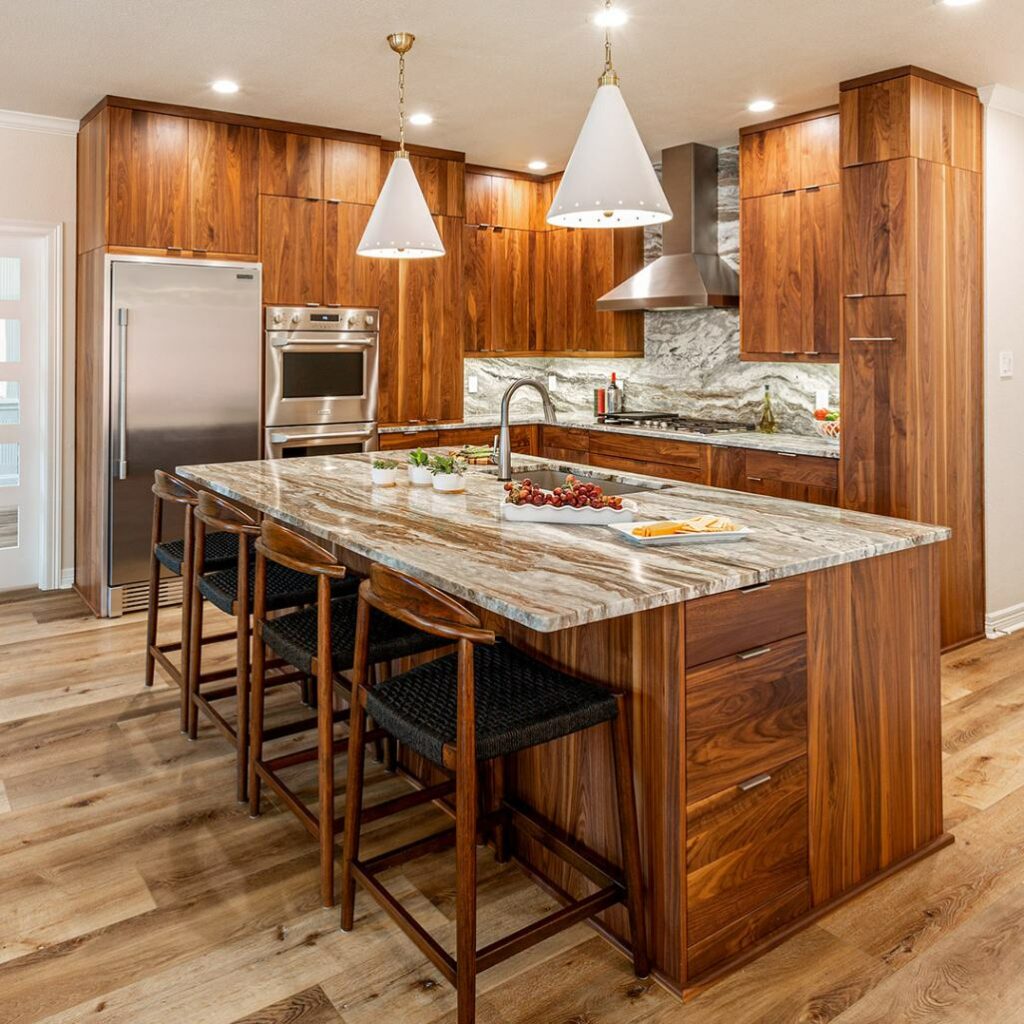
Popular Countertop Materials in Residential Renovations
Let’s focus first on the countertop materials that we install most often in our kitchen remodels. In nearly every case, these are the materials that provide the best Return on Enjoyment®. They look beautiful and make every day you spend in your home easier and more satisfying.
And they are…
- Granite
- Quartz
- Quartzite
- Soapstone
- Slate
- Limestone
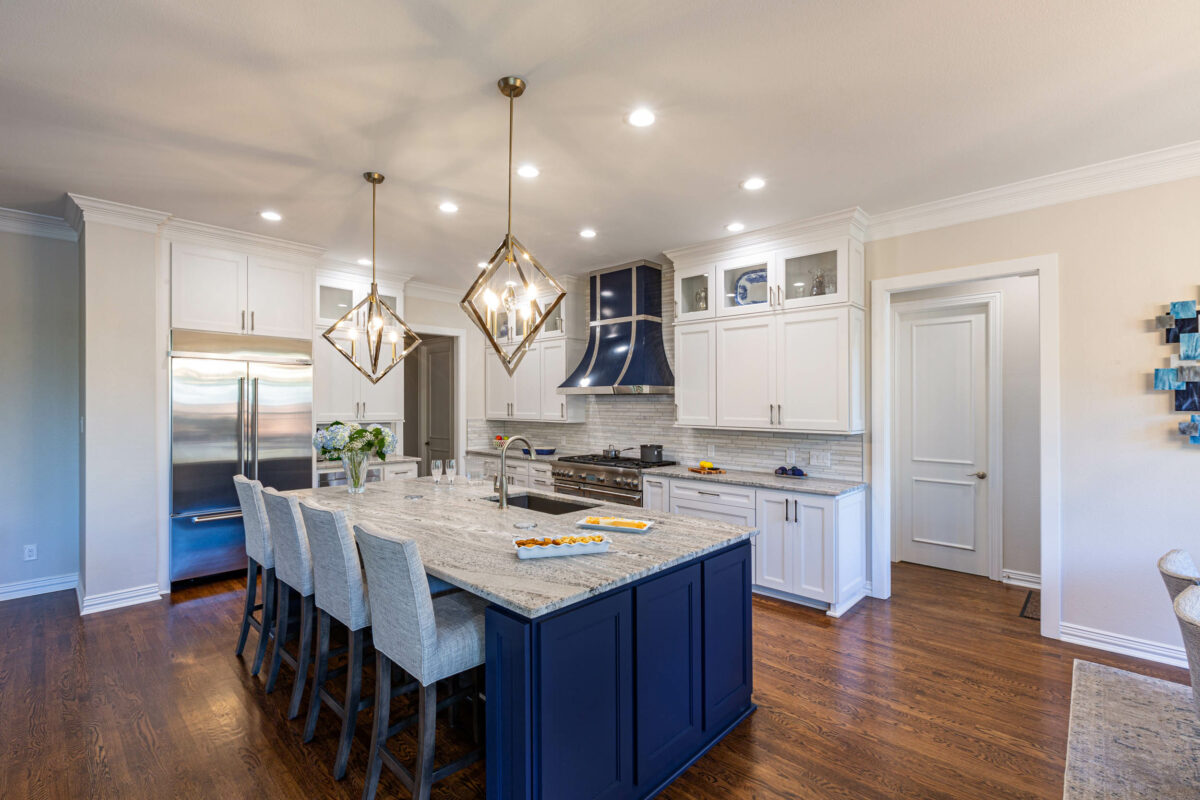
The 4 Things Most People Don’t Consider When Selecting Countertops
It’s easy to get “wowed” by the beauty of the slabs you see at the warehouse, but here are the four must-consider performance and lifestyle factors that are overlooked…
- Scratch resistance
- Stain resistance
- Heat resistance
- Maintenance requirements
Once you know how each material holds up, the one that’s right for YOUR household comes into focus…
Now, let’s look at how each material ranks for each performance consideration…
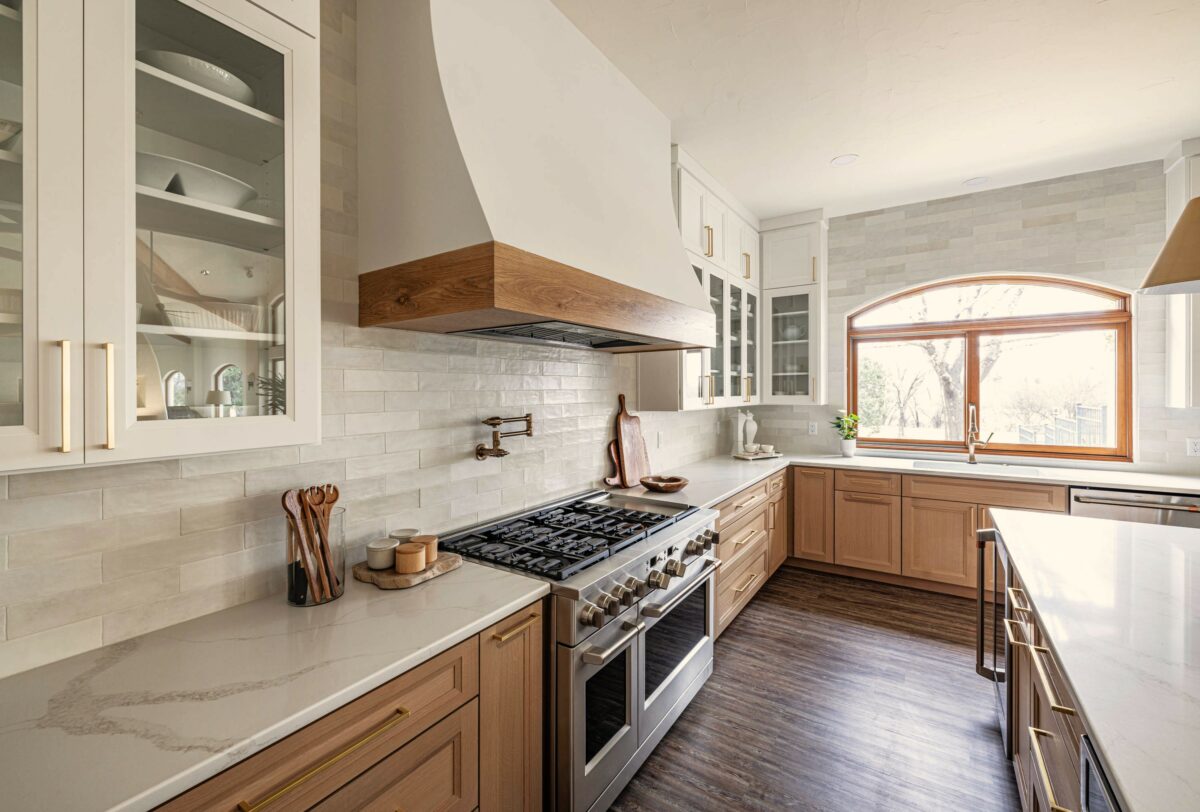
Best Scratch-Resistant Countertop Materials
Here are the countertop materials ranked from most to least scratch-resistant…
- Quartzite: Tough and dense, this material resists almost anything.
- Granite: Very strong, but can dull with wear over time.
- Quartz: Also fairly durable, quartz is nevertheless not as hard as natural stone.
- Soapstone and slate: These are both slightly softer surfaces that scratch more easily.
- Limestone: This is the softest and most vulnerable to scratches. For some lifestyles, though, it works! Just keep on reading to see…
Most Stain-Resistant Countertops for Kitchens
Here are the countertop materials ranked from most to least stain resistance…
- Quartz: Since it’s non-porous, quartz is wonderfully stain-proof.
- Granite: Granite can be totally stain-proof, too, as long as it’s sealed properly.
- Quartzite: This provides you good protection with proper sealing, too.
- Soapstone and slate: Naturally dense materials, these stones don’t stain in the traditional sense, but they can darken unevenly over time.
- Limestone: This natural stone is highly porous and known to be stain-prone.
The Countertops That Best Resist Heat
Here are the countertop materials ranked from best to worst for heat resistance…
- Soapstone: This natural stone handles heat like a pro!!
- Granite: This one is also excellent with high temps.
- Quartzite: Here, you combine high heat tolerance with super durability.
- Slate: This natural surface is still pretty good, but we’re definitely further from first place now…
- Quartz: Know upfront that this material can warp or discolor under heat.
- Limestone: Particularly sensitive to heat with what’s called “thermal shock.”
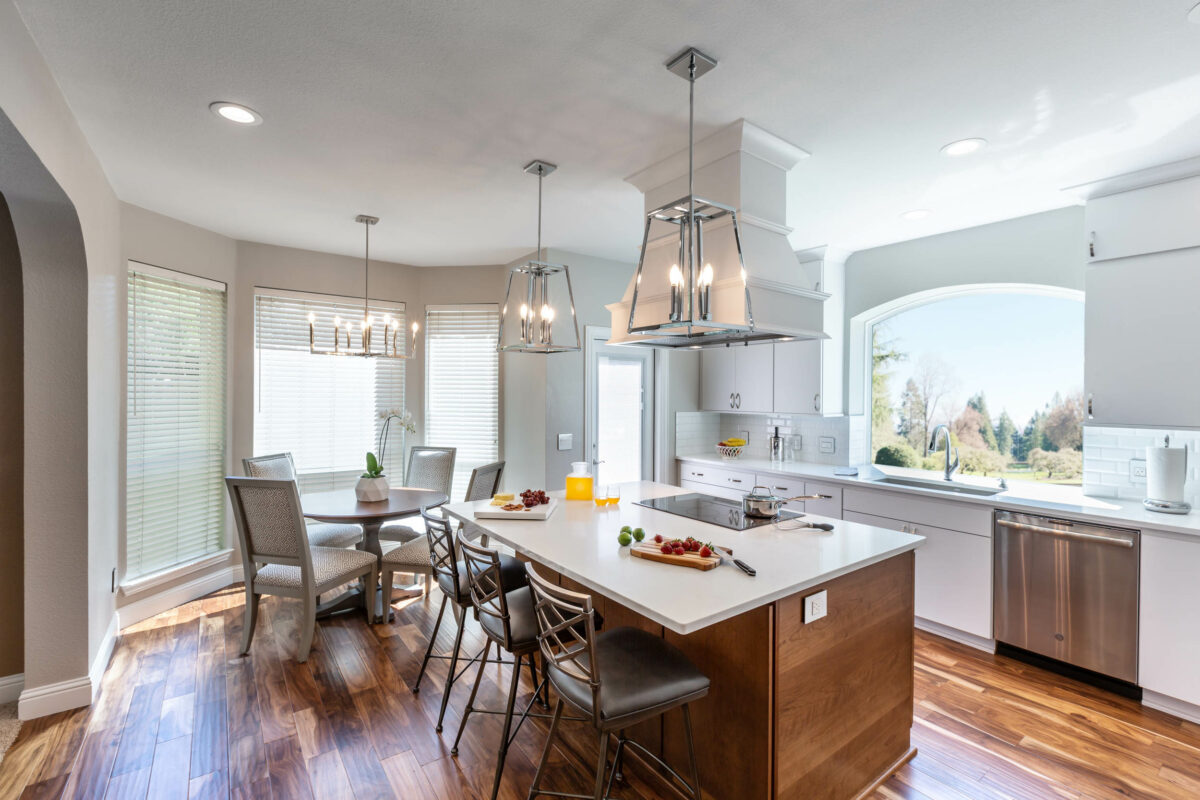
Low-Maintenance Countertops: Which Ones Are Easiest to Care For?
Here are the countertop materials ranked by ease of maintenance…
- Quartz: You don’t have to reseal this one, and it’s easy to clean. Combined with its other resistance factors, this is a great material in homes where there’s LOTS of elaborate cooking.
- Soapstone: If you give this an occasional oiling for color enhancement, you’ll enjoy a consistent look along with easy cleanability.
- Slate: This stone is naturally durable, especially unfinished, so maintenance requirements are low.
- Granite: These counters do require annual sealing…
- Quartzite: These counters also need sealing to enjoy the best stain resistance.
- Limestone: This material needs frequent attention, special cleaning, and sealing.
Why Choose Softer or Less Durable Countertops?!
You might have already asked: with so many high-performance options, why would anyone pick limestone or soapstone (for example)?!
The answer?
Every stone brings its own visual character, texture, and aging process. Performance and maintenance have to be considered first so you know what you’re getting into, but after that, it’s all about the look and feel you LOVE.
Let’s explore what else makes each material stand out as the best selection…
Pros and Cons of Granite Countertops
Granite exudes confidence. With its rich and natural grain and feel, it’s timeless. Granite’s depth and mineral sparkle make it feel grounded…and you never tire of looking at it.
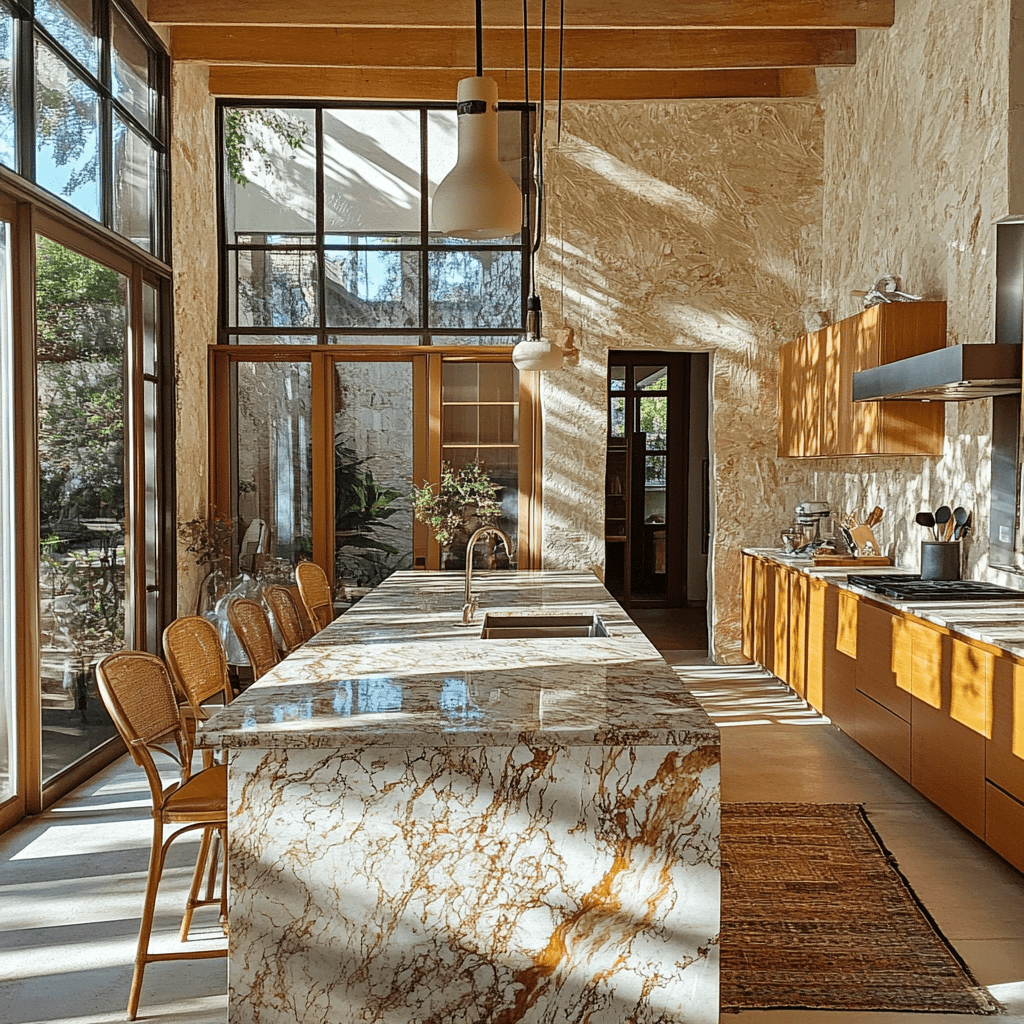
Pros:
- Strong and heat-resistant
- Naturally varied and beautiful
- Widely available in many colors and patterns
- Adds real estate value
Cons:
- Needs sealing → But you can do it once a year, and it’s simple.
- Can chip at edges → But you can choose rounded edges to avoid that.
Pros and Cons of Quartz Countertops
Quartz is modern and consistent. It can also mimic the look of marble without its natural weaknesses, so keep that in mind if you love marble but DON’T love its performance.
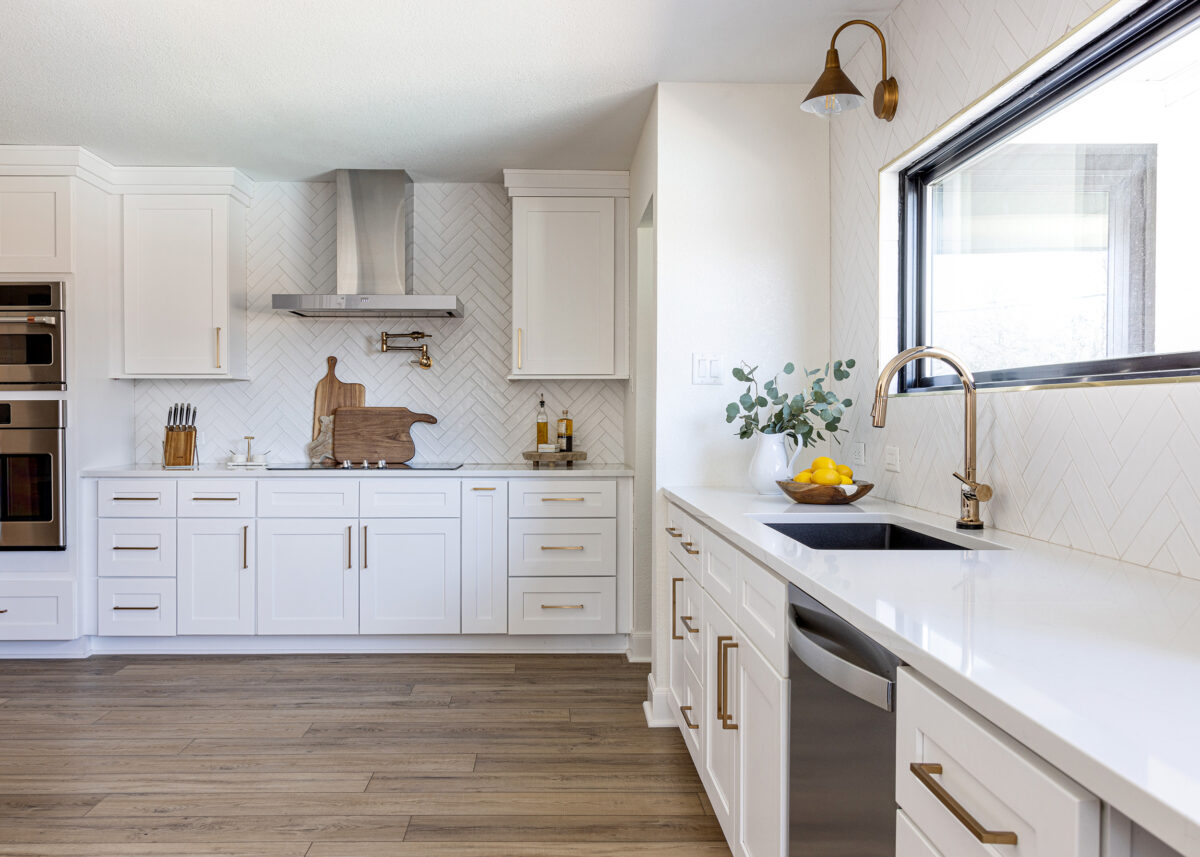
Pros:
- Durable and easy to clean
- Enormous design variety!!
- Non-porous and hygienic
- No sealing needed
Cons:
- Not heat-proof → So always use trivets!!
- Lacks natural variation → But you CAN choose patterns that imitate stone.
- Visible seams in large installs → However, experienced fabricators can minimize these…
Pros and Cons of Quartzite Countertops
Quartzite is luminous and textured (like marble). It also gives you the elegance of natural veining with MUCH greater strength.
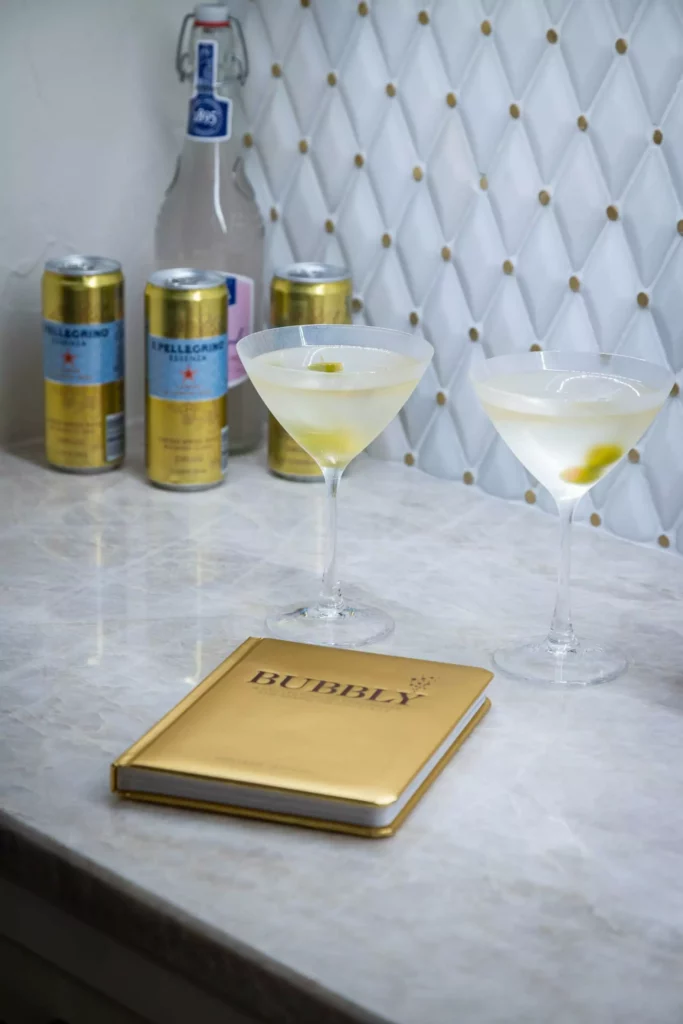
Pros:
- Incredibly hard and scratch-resistant
- Naturally stunning patterns
- Heat-resistant
- Long lifespan
Cons:
- Higher price point → But worth it for beauty plus durability.
- Needs sealing → And you should do it annually for best results.
- Limited color range → However, you can let the stone be the star of the room!
Pros and Cons of Soapstone Countertops
If you aren’t already familiar with it, soapstone is velvety to the touch with its smooth, matte surface. Soapstone darkens over time, but that’s a desired effect for a worn-in, soulful look that feels rich with history…
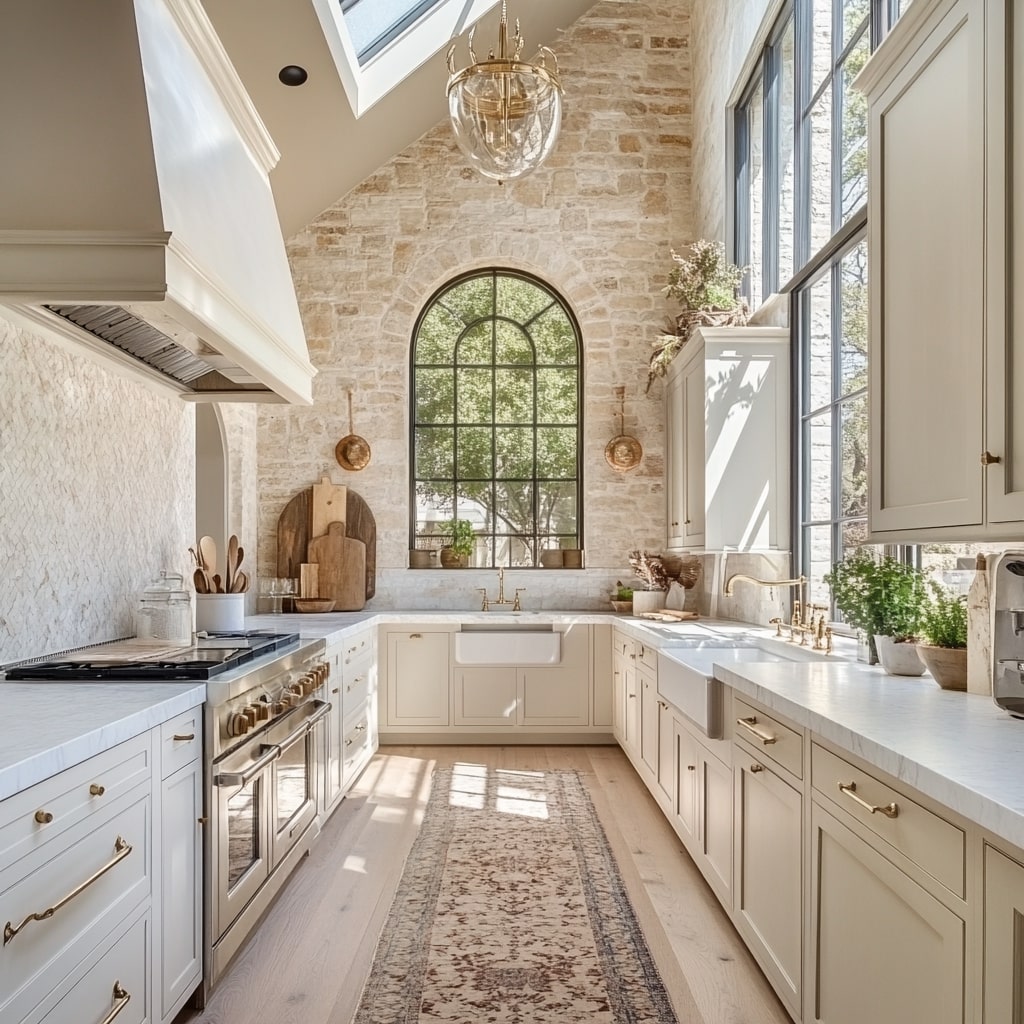
Pros:
- Withstands heat
- Doesn’t need sealing
- Can be sanded to repair scratches
- Aged patina looks intentional
Cons:
- Scratches easily → Some consider scratches part of its charm…others sand them out!!
- Color darkens unevenly → But you can apply mineral oil for uniformity.
- Limited color options → So use creative contrast in other finishes.
Pros and Cons of Slate Countertops
Slate is clean and contemporary with a soft texture and natural clefting. Its unpretentious elegance works in rustic or modern settings.
Pros:
- Naturally anti-bacterial
- Doesn’t show fingerprints
- Good heat resistance
- Low maintenance
Cons:
- Can chip at edges → But you can use eased or bullnose edges.
- Not available in large slabs → So plan around layout and seams.
- Limited dramatic patterning → But imagine…you can use lighting to highlight its texture!!
Pros and Cons of Limestone Countertops
Limestone brings an airy and organic look that’s perfect in biophilic designs. Its pale tone and subtle veining evoke charm and elegance.
Pros:
- Timeless visual appeal
- Naturally cool to the touch
- Ages into a vintage aesthetic
Cons (with Solutions):
- Highly porous → So be prepared to seal frequently and thoroughly.
- Stains easily → And also be prepared to clean spills right away.
- Scratches easily → Truly, limestone is best used in secondary bathrooms, guest kitchenettes, or other low-traffic spaces…
Bonus: What to Know About Built-In Induction Countertops!!
Look at any gorgeous, uninterrupted slab of natural stone or quartz. No cooktop interrupting its expanse. The surface is seamless…and then, with a tap, it cooks.
Built-in induction countertops are, I think, one of the most exquisite innovations in kitchen technology, and I’ve had the pleasure of seeing them in action at industry events!!
Here’s what to know…
Built-in induction systems are invisible burners embedded directly beneath the countertop surface. Compatible materials (like quartz or specially prepped natural stone) are fitted with wireless, touch-controlled induction modules that heat your cookware through the counter itself.
Here’s what that means for your kitchen remodel:
- Complete design freedom: Your island stays clean, minimal, and multifunctional, which is PERFECT for entertaining…or just sipping your morning coffee with nothing in your way!!
- Safer surfaces: The countertop itself never gets dangerously hot. Induction only heats ferrous-metal cookware, leaving the surface cool to the touch around the pan. Amazing!
- Child-friendly: Working with NO open flames or red-hot surfaces make this one of the safest cooking options out there.
- High-efficiency cooking: Induction boils water faster than gas and offers precise temperature control. Induction in general is the future of cooking.
- Easy to clean: No grates, knobs, or burners, so you get to just wipe the stone surface spotless!
With high-end manufacturers, this technology is gaining momentum fast. As more homeowners seek luxury kitchens with both form and function, these built-in induction counters are becoming a “must-have” in renovations.
That’s a lot of information!! What did you learn? What stood out? Do you think you know what countertop material is really the best for your kitchen and your bath?
Take the “what countertop material is right for you” quiz and find out how this all comes together!!
Which countertop material is right for you?
About the author:
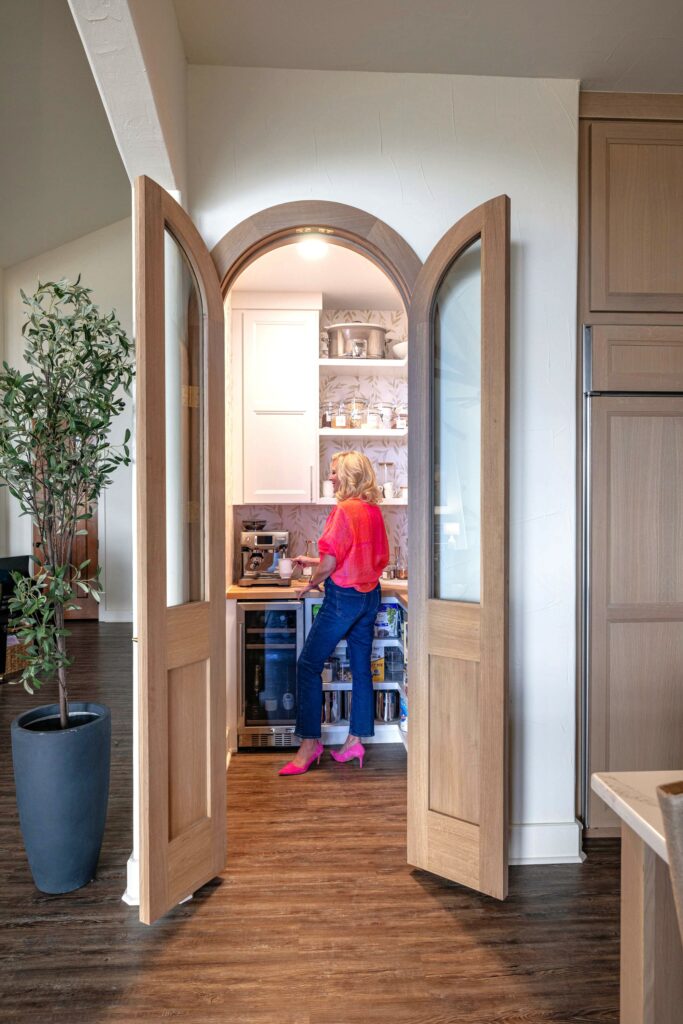
Robin Burrill, RID, NCIDQ, ASID, IDS, CAPS, is an award-winning professional kitchen, bath, and interior designer. Robin and her husband, Robert Mathews, have owned Signature Home Services, Inc. for over three decades, establishing a superior in-house team with a widespread reputation for delivering meticulous design to their many repeat clients.
In 2022, the national publication, Kitchen and Bath Design News magazine, named Robin to their Top Innovator list in recognition of her achievements in the field of kitchen and bath design. In 2024, she was named one of the Fall 2024 Market Pros and “tastemakers” by ANDMORE at High Point Market. Also in 2024, Fixr identified her as one of the Top Professional Interior Designers for their nationwide audience. At the start of 2025, she then acted as one of Dallas Market’s “Style Eyes” at Lightovation and Total Home & Gift Market.
Over her extensive career, Robin has been quoted in Architectural Digest and Forbes multiple times; her design work has been featured in top national trade publications; and she has been interviewed for Designers Today magazine’s “Profiles in Design” video series, among others. Widely respected for the depth of her knowledge, Robin is a sought after speaker and judge for many design industry events.
In 2023, Robin designed a bench for Charleston Forge, making her foray into product design. Robin currently serves as a volunteer on the board of the Dallas/Ft. Worth chapter of the Interior Design Society.

Leave a Reply